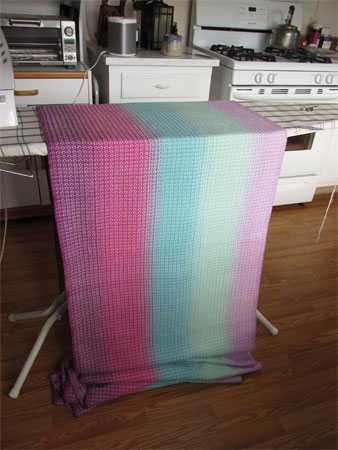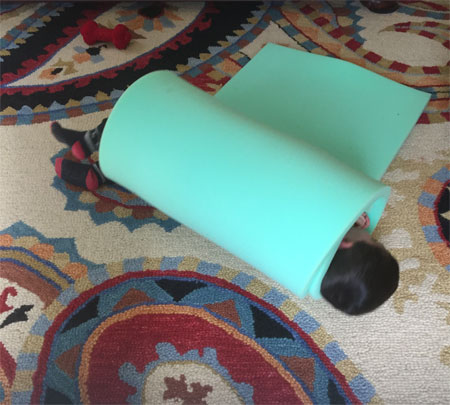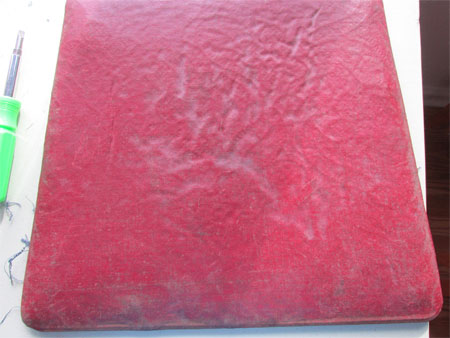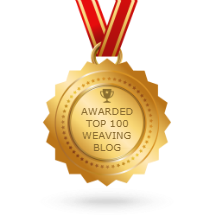Most weavers – for sure every weaver who knows, or knows of, Laura Fry – understand that wet finishing is an important part of the weaving process. And part of wet finishing is a hard press. The purpose isn’t to get out wrinkles, but rather to seal the deal with the threads, to make sure that they know where they belong and set them in their place.
In my old country home I had a built-in ironing board. Think 1950. You open a narrow, shallow cupboard and an ironing board folds down out of it. My hubby built it for me, and I loved it. It was very convenient for all the years that I had to iron blouses for work, and then for when I had to press my weaving. Since it was a built-in, it obviously stayed with the house.
When I moved to my new house, much smaller in size, I decided to buy an over-the-door ironing board. It hangs neatly inside the closet when not in use and folds down easily for use. But — and it’s a big but — it really must be used with the door closed. Most of my doors won’t close with the ironing board hanging on it, and there isn’t room for me to stand behind it on the door that does close. So it requires me to adopt an interesting stance to stabilize a door with my right foot while I’m ironing. Plus, I’m short. In my glory days I was 5’2.5″. I’m probably shorter now. Not tall enough to work comfortably at the not-adjustable-height of this ironing board. So it had to be replaced by a traditional ironing board.
I was blown away when I tried to buy one! Target had ironing boards for $45 and up. What??!! I had to go to Joann’s and I had a coupon for 30% off, so I’d buy an ironing board there. WHAT??!! The only ironing board at Joann’s was….drum roll….$90! Yes, ninety dollars! For an IRONING BOARD!!! No one even irons these days! Has it become a specialty item? What’s up with a $90 ironing board?!
Fortunately, for reasons she doesn’t remember, my daughter, who reportedly irons something once every 18 months or so, had two ironing boards, and was happy to give me one.
Nothing fancy. It goes up, the height is adjustable, you set it wherever you want to, and then you fold it up and put it in the closet. It was so much better than the over-the-door one! I’ll be donating that.
Who would have thought I could devote 6 paragraphs to ironing boards? Enough!
One of the things that surprised me in the difference between these two wraps is how much more distinct each of the warp colors look in RH’s wrap with the solid white weft. Plus you can see the hearts clearly. In RBG’s wrap with the variegated weft the color plays the major role, not the weave pattern.
Here’s a full view of RH’s wrap with the white weft.

And RBG’s, showing the change in the tails she requested.
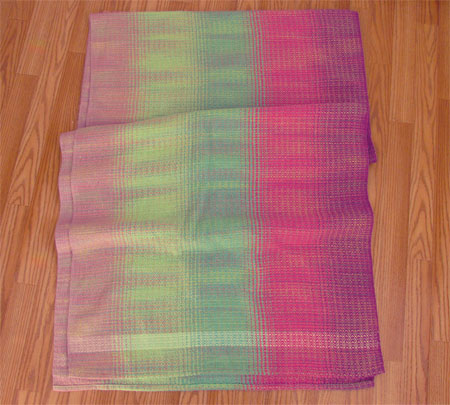
Those wraps are well on their way to their new homes, both in places I haven’t sent them before: one to Indiana and one to Belgium.
This afternoon I ordered the yarn for the next two warps. Maybe I’ll get a short warp for presents on the loom while I wait for the yarn to arrive.

